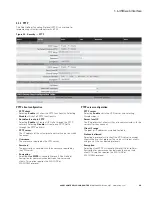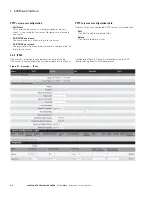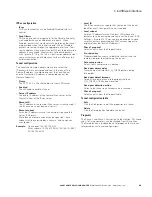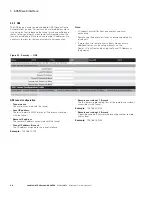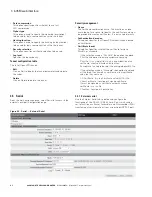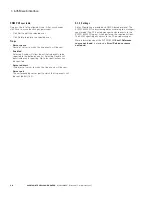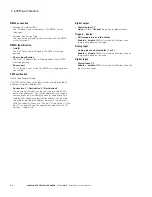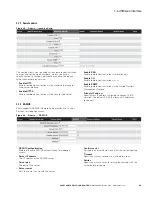
30
645M 4G/LTE CELLULAR ROUTER
MN032003EN March 2017 www.eaton.com
•
OpenVPN
Enable or disable the OpenVPN module.
•
Operation mode
This parameter tells the device to operate in client mode.
This feature applies only to tunnels that are enabled.
Tunnel configuration
•
Name
The tunnel name. This must be a unique name (do not use
space) to identify the tunnel and must be provided to create
a tunnel. It is only used internally.
•
Enabled
The tunnel can be enabled or disabled. When it is enabled,
the unit will try to establish a connection with the
OpenVPN server.
•
Tunnel operation mode
The tunnel operation mode. This option specifies whether
the tunnel is be created in bridge or router mode.
•
Remote server address
The IP address of the remote endpoint of the tunnel.
•
Remote server port
Port configuration of the remote endpoint of the tunnel.
•
Persist key
This option specifies whether to re-read key files across
SIGUSR1 or ping restarts
•
Persist tunnel
This option specifies whether to reopen TUN/TAP device
or run up/down scripts across SIGUSR1 or ping restarts.
SIGUSR1 is a restart signal similar to SIGHUP, but which
offers finer-grained control over reset options.
•
TLS-Client
This option when selected enables TLS and assumes client
role during TLS handshake
•
Protocol
This option specifies whether to use UDP or TCP
•
Fragment size
This option is used to specify the packet’s fragment
threshold. This setting makes sure that no UDP datagrams
are sent which are larger than the specified bytes
3.4.5 OpenVPN
OpenVPN serves to configure secured communication tunnels
in bridge and router configurations.
Figure 33 . Security — openVPN
3 645M web interface











